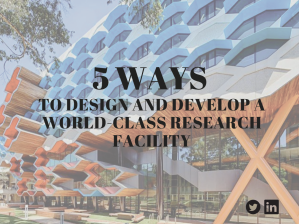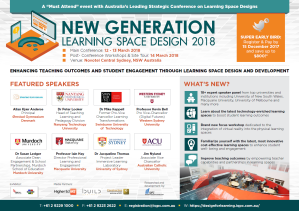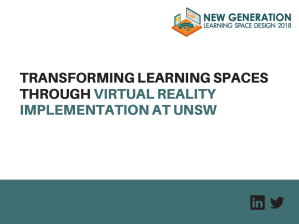In a world where digital is transforming the way we teach and learn, it can be argued that online, mobile and blended learning are foregone conclusions.
According to the NMC and Educause 2017 Horizon Report, education institutions that do not already have robust strategies in place for these new learning approaches, will simply not survive.
And while many universities and schools across Australia have solid online learning programs and strategies in place, fluency in the digital realm is more than just understanding how to use technology.
Developing online learning resources requires a deep understanding of digital environments and the buy-in of educators to ensure that these new tools and learning platforms can ultimately have a positive influence on student engagement and learning outcomes.
What’s more, creating and rolling-out online learning resources can also be a time consuming task, so educators need to be clever about how they design these resources to ensure their time is used efficiently and effectively.
Ahead of the 3rd Annual Online and eLearning Summit 2018, Sandra Lipinski eLearning manager, at Silkwood School explores the steps she has taken at her school to provide a framework for the effective creation of digital and multi-media resources and the impact this is having on student and teacher engagement.
eLearning at Silkwood School: an overview
“At Silkwood School we are using online learning to support flexible learning plans. Each of our students have a completely personalised learning plan and we are developing an advisory online learning model with small class numbers to ensure tailored and personalised learning.
At the moment our focus is on providing support for this personalised learning approach, but in the coming years we will be branching out this personalised model to distance learning and home schooling as well.
We are using BrightSpace by D2L as our online management platform and we have digital portfolios and learning object resources storage within that as well.”
Creating an efficient approach to developing and designing online courses
“We face the additional challenge that not all our students are doing the same course in detail. For example, it might be that they are all involved in a course on the same general topic, but each student is able to choose their own pathway through that course. Students are actively involved in setting their own learning goals and can design their own assessment pieces as well.
From a young age our students are collecting their own work samples to demonstrate their learning. A lot of online learning models take a mass education approach where a course is created and the students work through that course as a cohort. All students are doing the same assessment pieces, produce the same comparative data and get a certificate at the end.
At Silkwood School, our online programs do not work this way, but a lot of the same principles apply. For example, consistency and flexibility between courses to make it familiar to staff and students is essential.
But when we create a traditional online learning course, our aim is to update each course regularly and add new and exciting themes. Our aim is to design our online courses with flexibility in mind so that staff and students can work together to co-design new approaches to already existing courses.”
Developing online courses for different stages of the learner journey
“The first step to developing personalised learning courses for different stages of the student journey is to train staff to be critically reflective and identify what parts of the course will have the greatest amount of change over time.
We also identify which parts of the course drive the core knowledge that a student will need and we focus on those core elements. For example, it comes down to things like how we name the courses, how we number them and how we tag them so that different elements of various courses can be used in other courses and year levels. It encourages staff to share online learning resources.
It is a two-fold approach. The first part is critically analysing effective change and what we can create that is not likely to change. The second part is describing and labeling those elements in a way that makes it easily usable and shareable for others.
For Silkwood School specifically, we have a large amount of courses and resources that have high amounts of change because of the personalised learning approach we take. In this approach, we train the student to access and search for online components themselves, because there are already a number of resources available of them on the internet or links to other online course repositories. Students are trained to be more responsible for their learning and source some of the online courses themselves.”
Addressing challenges along the way
“The first challenge is always teacher training. The first element of this is the teacher’s ability to use technology themselves. It’s important to understand what technology teachers are familiar with and making sure we fill any gaps in skills.
The other aspect of teacher training is educating them to be critical thinkers as far as choosing the technology that is best for their teaching practice. For example, focusing on learning outcomes, what they want to achieve and choosing technology to support this. It is about not just using technology for the sake of technology.
For example, at Silkwood School we have video cameras and there is always a number ideas from staff about how these cameras can be used. But it’s important to always come back to the question: what is your learning goal? Our aim is to get staff to think about what they are trying to achieve as far as pedagogy goes, not just using the technology because it is there.
When it comes to online learning our aim is to ensure staff are critical thinkers in terms of pedagogy. We want to develop good eLearning practice, as well as training around how to use new technology and how to teach with it.
Another challenge is also the pace of change within our organisation. This is something every organisation is faced with at the moment as innovation is transforming schools and universities alike. We have to keep up with classroom design and what technology is being used globally to continue to drive innovation.
Parents’ perception of online learning is another challenge. Most parents these days did not learn in school about how to use technology and they don’t understand what it can do in terms of boosting learning, and, also what it can do to hinder learning. For example, some parents are scared about things from blue light to screen time. Out aim is to inform parents about our goals and what we want to achieve through online learning so that they can understand.
Over the past couple of years there has also been a bigger government emphasis on STEM and coding which is also driving a shift in the parental understanding. There are so many teaching pedagogies around 21st century learning and and we are finding more recently that parents are also pro-21st century learning.
In our direct neighbourhood, primary school students will have Bring Your Own Device (BYOD) one-to-one devices within the next few years and this will flow through as they enter higher education. Technology is becoming embedded in the learning environment and we have to make sure that teachers keep up with them.”
Linking online learning to pedagogy
“The first part of linking online learning to pedagogy, is to ensure staff have a clear focus of what they are aiming to achieve from an educational perspective when using new technology in the classroom. Not just want hey are trying to achieve with technology, but what they are trying to achieve educationally with the tools that technology provides.
Ensuring staff are focused on this element is a very important thing because we are validating them and their knowledge as teachers first before we provide new technology.
For us a big thing was gaining trust and building relationships with the staff. In the past, poor relationships between educators and IT existed. Our aim was to improve this relationship and help staff to get help as quick as possible. We are being very proactive in how our IT staff can help and work with educators.
For example, our IT staff observe how educators are using technology in the classroom and work with them to try and stop any problems that might arise from using technology before they happen. It’s about ensuring our IT staff are approachable and can make staff lives easier, which has been a big development.
Because we have personalised learning plans for students at Silkwood, we also have a heavy focus on personalised staff development and training. We are using technology so that staff have personalised learning plans and online courses that they use for training. By being a student themselves and using these online resources it’s creating a great dialogue around the benefits of new online technologies that they can then implement in their own classrooms.
For example, if staff are not quite ready for implementing a new technology or tool in the classroom, we build it into the staff courses first. This helps us to test out the new online platform in a staff environment with adults and gives them the ability to see if they can re-use it in their own classroom environment with younger learners.”
Results to date
“Since taking this approach to online learning we have seen a shift in what classroom time is used for. Rather than students copying notes from a blackboard, they now have direct access to those notes online. This frees up class time for students to work on mastering skills for taking their learning deeper, as well as demonstrating the mastery of those skills. There is less wasted time on lower order thinking and more time for in-depth learning on those higher order thinking tasks.”
Interested in learning more?
Join Sandra at the 3rd Annual Online and eLearning Summit 2018 where she will further explore:
- Design principles that increase the chances of reusing and repurposing those resources
- Tips that will help teachers and institutions to reduce the waste when resources cannot be used repeatedly, and to reduce the amount of updating required as courses change over time
- A guide to developing resources that can be used across many courses and age groups
For more information visit https://onlineandelearning.iqpc.com.au or call +61 2 9229 1000 or email enquire@iqpc.com.au





 Ahead of the
Ahead of the 





